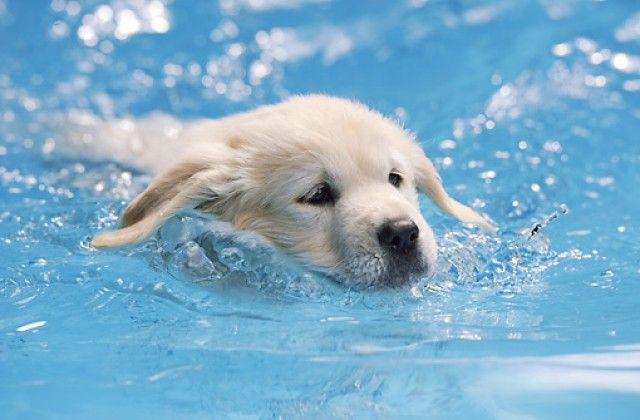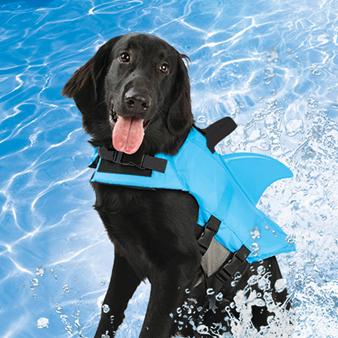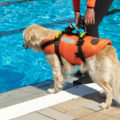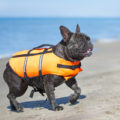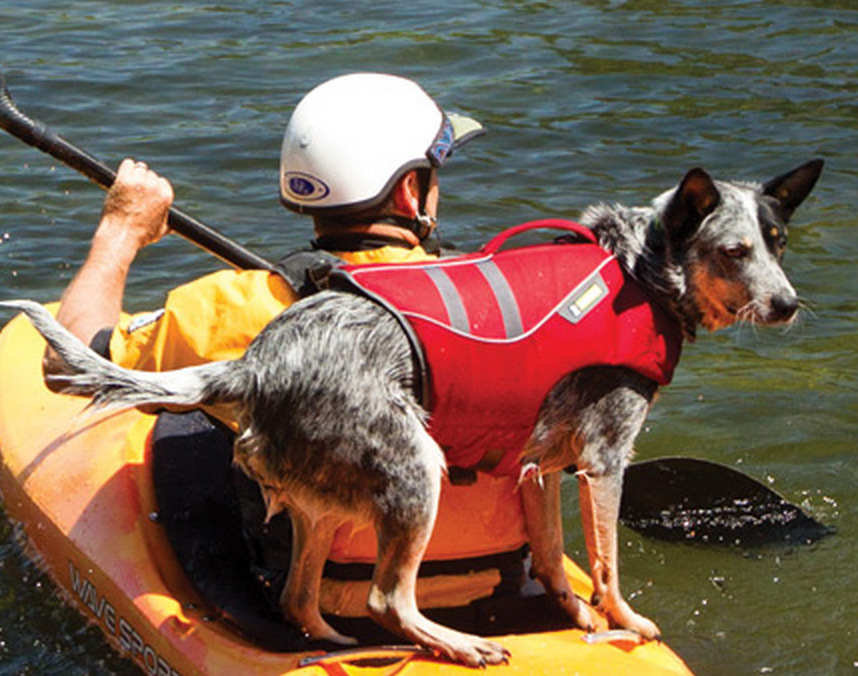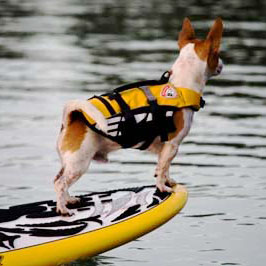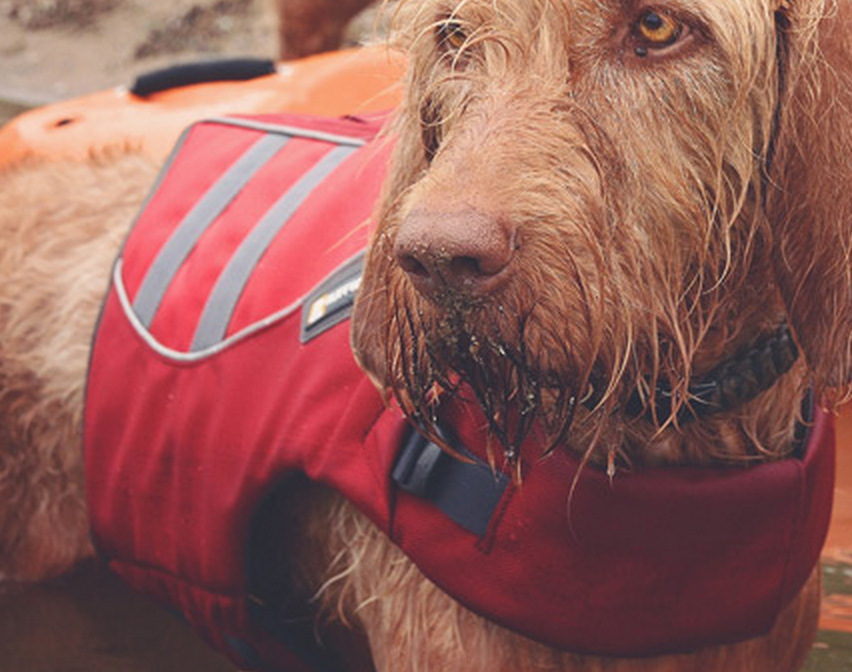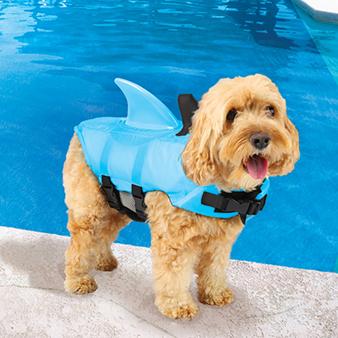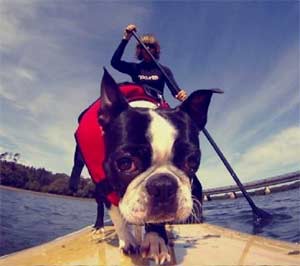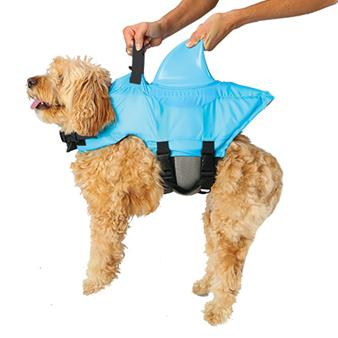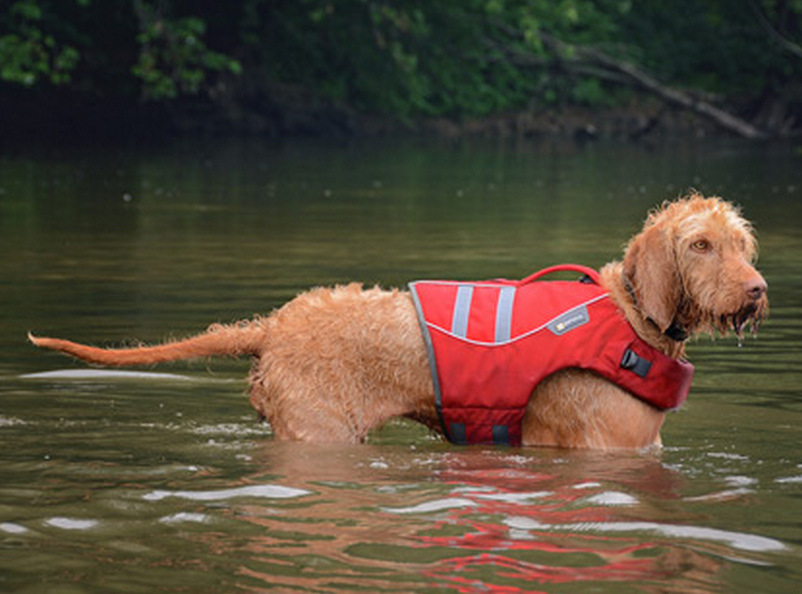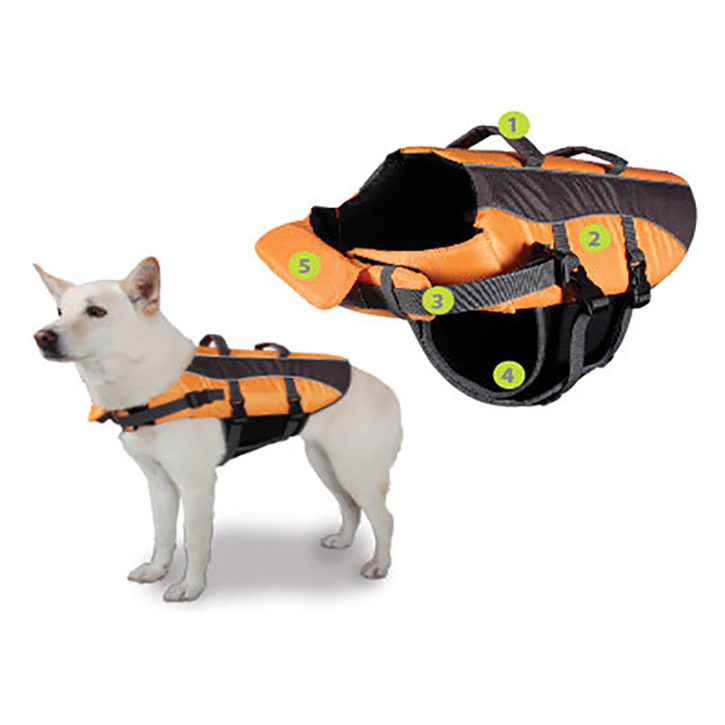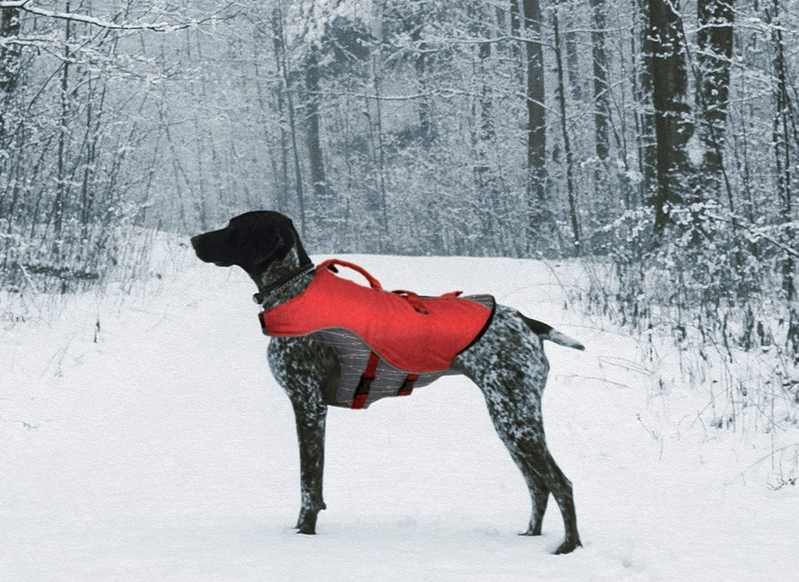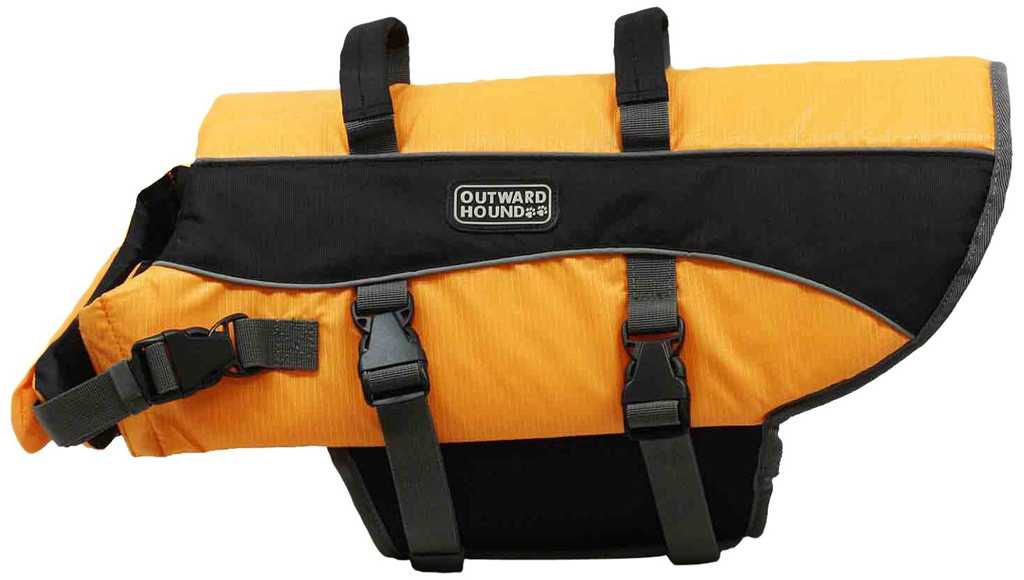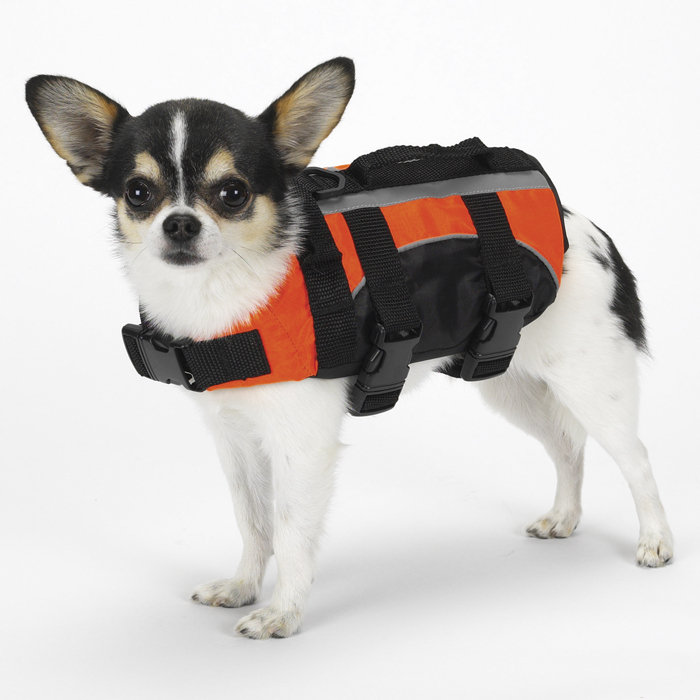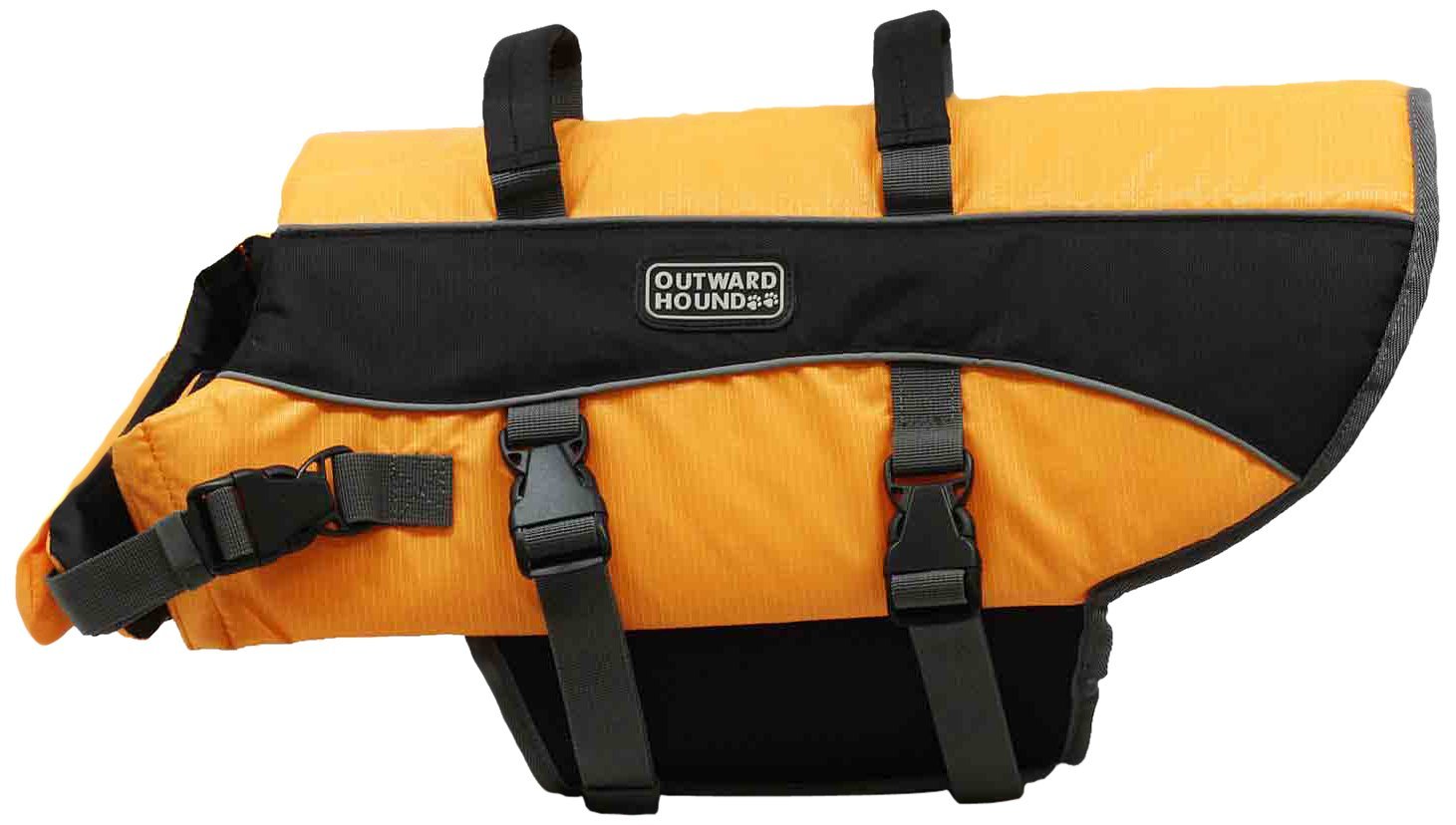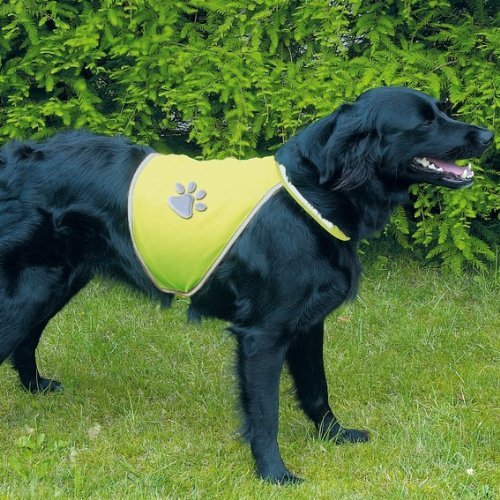Ok, so this is why I thought that all dogs were terrific swimmers. I was out on a boat with my boss at the time. So, of course, I wanted to make a good impression.
A co-worker, Julie, and Bella, my bosses black lab, were hanging at the back of the boat with me. Everyone was having a lovely time. All of a sudden, Bella jumps off the back of the boat.
I, thinking she was going to drown, jumped in after her. Fully clothed, Corona in one hand, my over-priced cell phone in the other. Bella gave me a nudge as she was swimming past me.
I am sure I was red-faced and it was not due to the sun (earned some brownie points with the boss though)! Everyone got a kick out of my inane rescue efforts. I was well-intentioned, and it’s the thought that counts, right?
The moral of this story would be, that while some dogs can swim, not all of them can. Bella was a better swimmer than I could ever be, but she was also raised on the water. Despite my experience that day, it turns out that some dogs are better at it than others.
The breed, temperament, and personal nature of your specific pooch, factor in when it comes to your dog’s ability to swim.
So, when it comes down to it, one of the biggest questions people ask is what age to teach a puppy to swim? Your pup will need help learning how to swim, or at least help with improving their abilities. This article will cover everything you need to know before teaching your puppy to swim.
The Younger The Better
At What age to teach a puppy to swim? Ideally, much like human babies, the younger the better. They are typically easier to handle as they are smaller.
Plus, they will be much more comfortable in the water if started at a young age. As soon as your little furball has had his vaccinations, he is ready to get in the water.
Make it a positive experience
Not all dogs are born with the ability to swim or even to stay afloat. Knowing the breed and the characteristics that go along with it will be vital. You don’t want to create a fear of water due to a traumatic experience.
Test your doggies ability. Bring a tennis ball, throw it in the water, see what he does. Labs and other retrievers are likely to have the natural ability to keep themselves afloat. (Likely, so always fit your pup with a canine life jacket!) Enticing Fido with his favorite ball is a great way to introduce him to water.
Stress-free environment
Many people say to start off in a quiet place with not many distractions however your dog’s unique personality may play a role in this situation. Many dogs are natural competitors so it may help to see their furry friends jumping in the water which just might entice him to do the same.
If your dog tends to be more skittish or shy than we agree that you should teach in a quiet, calm place. You, however, should be stress-free. Your dog will pick up on your emotions. If you are nervous, Fido will likely be nervous.
Positive Reinforcement
As stated earlier, your pooch looks to you for reassurance. So, beyond the question of what age to teach a puppy to swim. He will also take your cues on how to react to situations. Being relaxed and comfortable will help your dog be the same.
As with learning any new trick, you should offer your pup treats and positive reinforcement when they bravely get their paws wet. A dog’s natural instinct is to please their humans. They see us as the leader of the pact. Hearing words of encouragement from you is like gold to your pup.
Some of the Best Breeds for Swimming:
Knowing your dog’s breed is nearly as important as knowing your dog. Some dogs have the natural instinct when it comes to water, but there are some breeds that do not, so these little guys will need a bit more help in learning how to swim.
Here, we will go over some breeds that are natural swimmers from birth and those who are not. Please keep in mind that this is more of a guideline, every dog will be unique in his personality. The following breeds are the ones you should consider when looking for a more water-friendly pooch.
Standard Poodle:
Ok, these dogs are so uniquely cute. These big, curly-haired, teddy bears are amazing swimmers. Even their name is derived from a German word (pudelin) that means ‘to splash’.
These dogs are typically more comfortable in the water than other breeds. They absolutely thrive on exercise, so they can be the perfect boating and swimming companion.
Retrievers:
Goldens, Chesapeake Bay’s, Labradors – These awesome dogs make the ultimate family pet. They are more prone to be natural swimmers (evidenced by Bella the black labs’, brave dive!).
Known for being smart and sweet, they are capable of being taught many commands. They need a lot of exercise and room to let off energy. Go to any dog beach and you’ll be guaranteed to spot quite a few of these friendly pups running about.
Spaniels:
Many in the Spaniel breed family are instinctively comfortable in, and around water. The Irish and American Water Spaniels, confirmed by their name, are apt swimmers and have rich oily coats for swimming purposes.
With their sweet disposition, and ability to quickly learn commands, this breed is one of the top breeds for living in and around the water.
Setters:
Both the English and Irish Setters were bred to be comfortable hunting near the water. The Irish setter has a reddish coat while his English cousin can be distinguished by its short, typically spotted coat. They are a wonderful dog and would be a great addition to any water-loving family!
Newfoundland:
These large but cuddly dogs were originally bred to help fisherman bring in the nets. They are intelligent and can obey commands very well. They are great with children too!
If you need a breed that you can take swimming or out on the water with you, these slobbery, loving, giants would be one of my top choices.
Breeds NOT Known for Their Swimming Capabilities:
While, of course, we recommend having at least a few basic lessons for any dog before letting them swim, the following breeds are known for not being able to swim.
This does not mean that they can’t learn. I am a firm believer that you can teach an old dog new tricks. These breeds just might need a little extra help.
You should also be prepared that there is a real possibility that your dog is just not capable of swimming, especially with the breeds we are about to discuss. Don’t stress it though. They have doggy life vests for this exact reason!
Pugs, Bulldogs, pretty much any brachycephalic (short-muzzled) breeds:
I grew up with two pugs. Both pugs and bulldogs are awesome little dogs. Especially with kids. However, due to their flat faces and short nasal passages, they tend to be more apprehensive about getting wet.
The very best way to teach your pug or bulldog to swim is in a quiet environment. Introduce him to the water gradually. Their short muzzles and stubby legs put them at a disadvantage.
Some can hold their head above the water and do a basic doggy paddle, but some pug and bulldog owners say that their pup sank like a rock. Due to this, we recommend having your pug or bulldog wear a doggy life jacket until he becomes comfortable in the water.
Basset Hound:
Basset hounds are so stinking cute. The big doe eyes, loose wrinkly skin, like 1-inch legs (ok, maybe not an inch, but they have super, short, stubby legs!) which come together and make one of the cutest dogs ever!
All of those adorable features also make your Basset a poor swimmer. Those short legs make it incredibly hard for him to paddle, while his baggy coat can tend to drag him down.
These dogs are also not the most athletic, and would probably prefer to be lounging about inside the boat or better yet left at home, snoring on the couch.
Toy Breeds:
Toy breeds such as Pomeranians, Yorkies, Papillons, and Chihuahuas are not big fans of swimming. While they may be able to doggy paddle they aren’t likely to enjoy it.
These breeds tend to be shy and skittish, add that to their size and they will probably be filled with fear when placed in water where their paws can’t touch the bottom.
This does not mean that you can’t raise your toy pup to like water but it will take a lot of trust training which is more suitable to learn as a puppy.
Greyhound:
While these dogs are super fast on land, they are not generally as comfortable in the water. They have the long legs to paddle well but their lean body means that they aren’t the most buoyant.
They are incredibly smart and very loyal so they make absolutely wonderful pets, although, if you are looking for a water-loving dog, a greyhound may not be the best choice.
Maltese:
These little dogs just scream princess (or prince!). They are beautiful no doubt, especially their long, luxurious coats. They tend to be more of a one person dog and are very loyal.
This is one of the reasons your Maltese may not want or like to swim. They aren’t the most sociable of breeds and their hair doesn’t make for good swimming. They are usually capable of staying afloat but be prepared for a few days of the cold shoulder if you make them attempt it!
Beagle:
This one may come as a shock. It did for me. I was a beagle parent for almost 18 years! I was of the belief that beagles loved the water, so I decided to put Chance in the backyard pool.
He flipped out. He could stay afloat but destroyed the pool wall while trying to get out. (I know, I know, I felt terrible!) Little did I know that beagles are not fond of swimming. They can doggy paddle but generally, do not enjoy it.
Do’s and Don’ts
- Do keep your dog on a leash, at least until she is comfortable and confident in the water.
- Don’t just toss your pooch in and hope for the best. Yes, some people do this. The best way to teach your dog to swim will be gradually or you may cause him to develop a fear of the water.
- Do offer words of encouragement and an occasional treat. Your dog wants to please you, so be sure to let him know when he is doing well!
- Don’t force your dog to swim, even if he knows how. Sometimes they just don’t like swimming and forcing them will make him resent you!
So, What age to teach a puppy to swim? Really, whatever the age of your pup, make it fun. Swimming should be a good experience for both you and your four-legged friend.
While it may be easier to teach a puppy to swim, with patience, most dogs of any age are capable of learning. Knowing your dog’s personality and doing your research will make the lessons that much easier. Remember, safety first!
